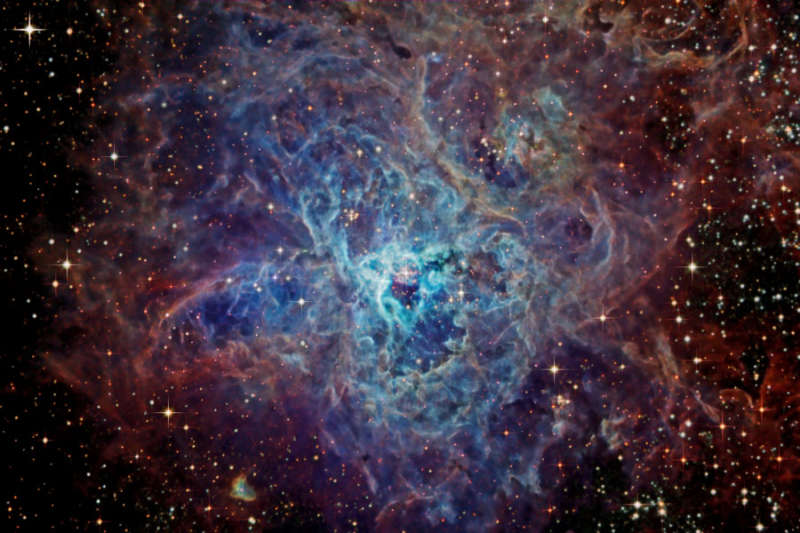 |
Астронет: Астрономическая картинка дня Космическая паутина туманности Тарантул http://www.variable-stars.ru/db/msg/1231791/eng |
Credit & Copyright: Joseph Brimacombe
Explanation:
First
cataloged as a star, 30 Doradus is actually an
immense star forming region in nearby galaxy
The Large Magellanic Cloud.
The region's spidery appearance is responsible for its popular name,
the Tarantula
nebula, except that this tarantula is about 1,000
light-years across, and 180,000 light-years
away in the southern constellation
Dorado.
If the Tarantula
nebula were at the distance of the
Orion Nebula
(1,500 light-years), the nearest stellar nursery to Earth, it
would appear to cover about 30 degrees (60
full moons)
on the sky.
The spindly arms of the
Tarantula nebula
surround
NGC 2070,
a star cluster that contains some of the brightest,
most massive stars known.
Intriguing details of the nebula are visible in
this
scientifically-colored image.
The cosmic Tarantula
also lies near the site of the closest
recent supernova.
Authors & editors:
Robert Nemiroff
(MTU) &
Jerry Bonnell
(USRA)
NASA Web Site Statements, Warnings,
and Disclaimers
NASA Official: Jay Norris.
Specific
rights apply.
A service of:
LHEA at
NASA /
GSFC
& Michigan Tech. U.
